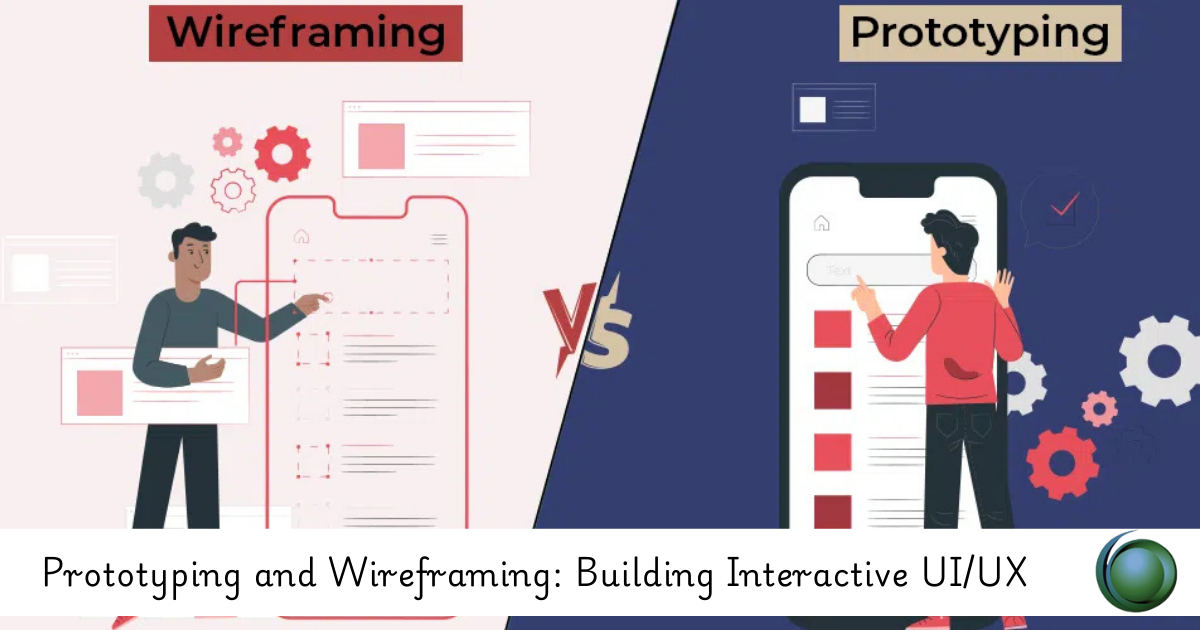Description
Introduction of Prototyping &Wireframing for UI/UX
Prototyping &Wireframing for UI/UX course focuses on the essential skills of enabling participants to bring their design concepts to life through interactive and functional prototypes. Students will learn how to create low-fidelity wireframes to outline design structure and high-fidelity prototypes that demonstrate interaction and user flow. By using industry-standard tools like Figma, Sketch, and Adobe XD, participants will practice designing user-friendly interfaces that can be tested and refined before full development. This course is designed to bridge the gap between conceptual design and user experience testing.
Prerequisites Prototyping &Wireframing for UI/UX
- Basic understanding of UI/UX design concepts.
- Familiarity with design software (e.g., Figma, Sketch, or Adobe XD).
- No prior experience with wireframing or prototyping is necessary, but some design knowledge will be helpful.
Table of Content Prototyping &Wireframing for UI/UX
1: Introduction to Prototyping and Wireframing
1.1 What Are Wireframes and Prototypes?
1.2 The Role of Wireframes and Prototypes in the UX Design Process
1.3 Overview of Tools for Wireframing and Prototyping
1.4 Differences Between Low-Fidelity and High-Fidelity Prototypes
2: Wireframing Fundamentals
2.1 Understanding Low-Fidelity vs. High-Fidelity Wireframes
2.2 Structuring a Wireframe: Layouts, Grids, and UI Elements
2.3 Designing for Different Devices: Responsive Wireframes
2.4 Best Practices for Creating Wireframes Quickly and Effectively
3: Tools for Wireframing
3.1 Overview of Figma, Sketch, Adobe XD, and Balsamiq
3.2 Setting Up Projects in Wireframing Tools
3.3 Creating and Using Templates and Design Systems
3.4 Collaboration Features for Team-Based Wireframing
4: User Flows and Information Architecture
4.1 Creating User Flow Diagrams and Maps
4.2 Integrating Wireframes into User Flows
4.3 Designing for Task Completion and Navigation
4.4 Information Architecture: Structuring Content for Intuitive Use
5: Interaction Design and Microinteractions
5.1 Introduction to Interaction Design Principles
5.2 Designing Microinteractions for Better UX
5.3 Adding Animations and Transitions to Wireframes
5.4 Using Interaction to Guide User Behavior
6: Prototyping Basics
6.1 Building Interactive Prototypes from Wireframes
6.2 Low-Fidelity Prototypes: Purpose and Process
6.3 Creating Clickable Prototypes for User Testing
6.4 Prototyping with Figma, Sketch, and Adobe XD
7: High-Fidelity Prototyping
7.1 Creating Detailed and Functional High-Fidelity Prototypes
7.2 Adding Visual Design Elements: Typography, Colors, and Icons
7.3 Designing for Interactions: Buttons, Menus, and Inputs
7.4 Testing and Iterating on High-Fidelity Prototypes
8: Interactive and Responsive Prototyping
8.1 Designing for Different Devices: Mobile, Tablet, and Desktop
8.2 Building Responsive Prototypes: Best Practices
8.3 Using Adaptive Design in Prototypes
8.4 Testing Interactive Prototypes Across Devices
9: User Testing and Feedback
9.1 Conducting Usability Testing with Prototypes
9.2 Gathering Feedback from Users on Wireframes and Prototypes
9.3 Analyzing Feedback to Improve Designs(Ref: UX Research and Strategy: Designing with Data)
9.4 Iterating and Refining Prototypes Based on User Insights
10: Advanced Prototyping Features
10.1 Adding Complex Interactions: Drag-and-Drop, Scroll, and Gestures
10.2 Using Plugins and Extensions to Enhance Prototypes
10.3 Integrating Prototypes with Development Teams
10.4 Exporting Prototypes for Handoff to Developers
11: Collaboration and Handoff
11.1 Working with Teams on Wireframes and Prototypes
11.2 Handoff: Sharing Prototypes with Developers and Stakeholders
11.3 Best Practices for Documentation and Design Specs
11.4 Maintaining Consistency Across Prototyping and Development
12: Final Project and Conclusion
12.1 Designing a Complete Wireframe and Prototype for a Real-World Project
12.2 Presenting Your Prototype to Stakeholders for Feedback
12.3 Final Iteration and Refinement of the Prototype
12.4 Future Learning: Advanced Prototyping Tools and Techniques
Conclusion:
Wireframing and prototyping are essential skills for creating user-friendly interfaces. Through iterative design and testing, you can enhance the overall user experience and ensure the final product meets both user needs and business goals. This training provides you with the foundational knowledge and practical tools needed to start designing effective wireframes and prototypes that lead to successful, user-centered design solutions.







Reviews
There are no reviews yet.